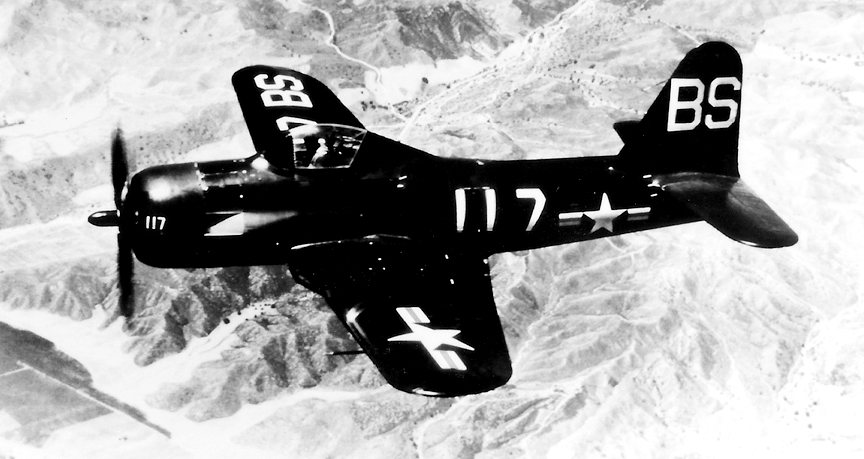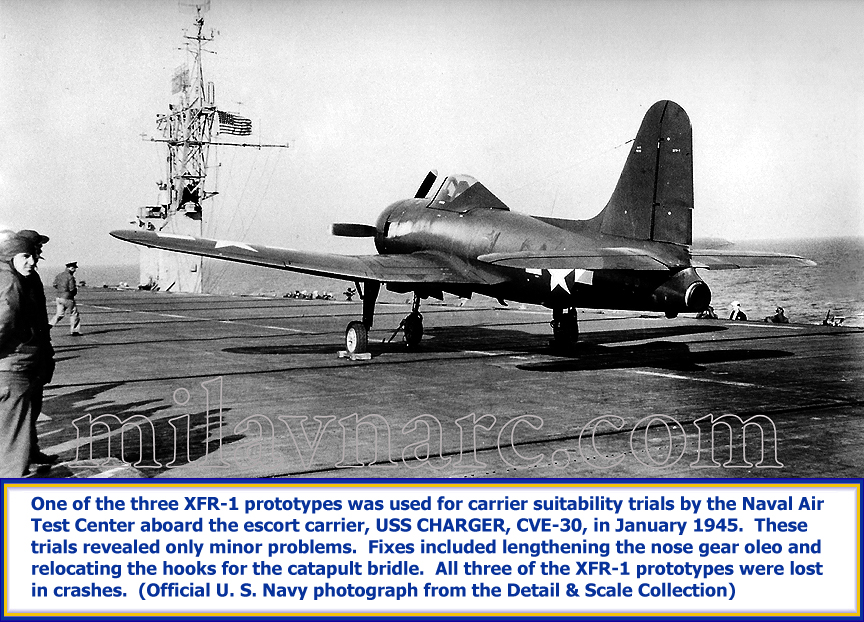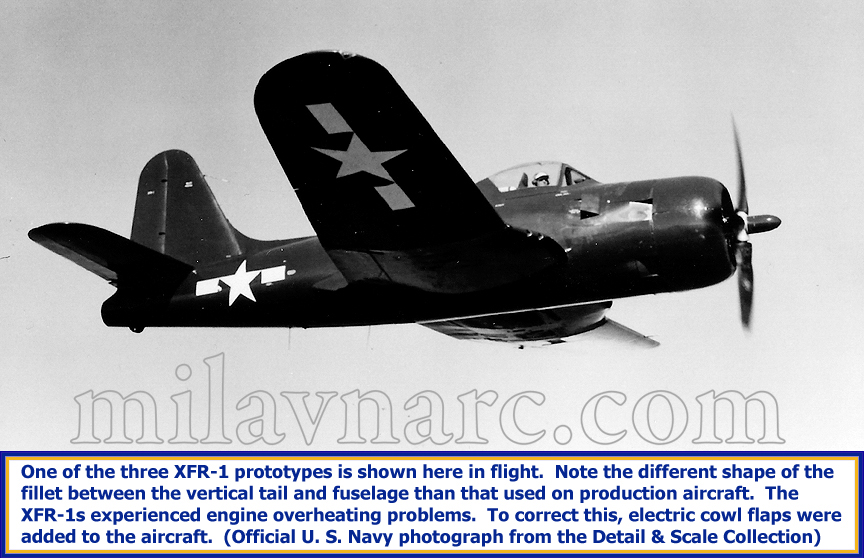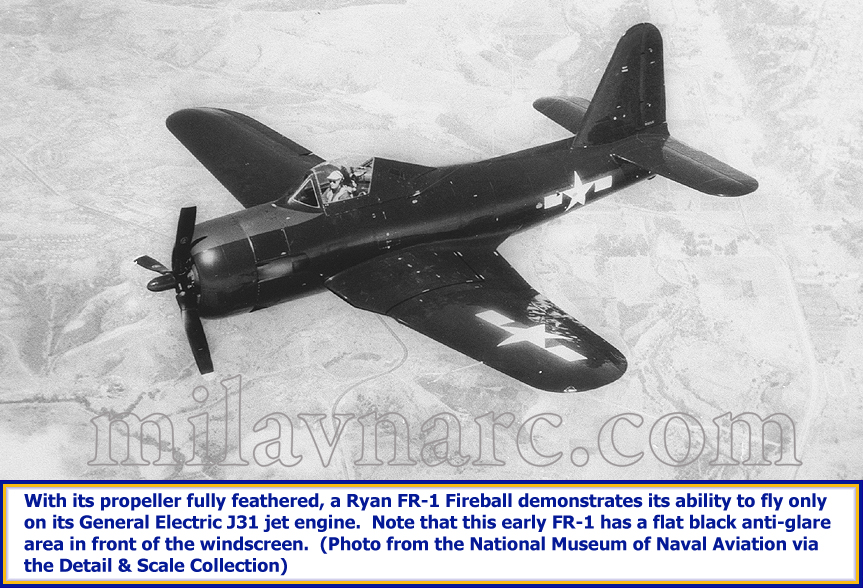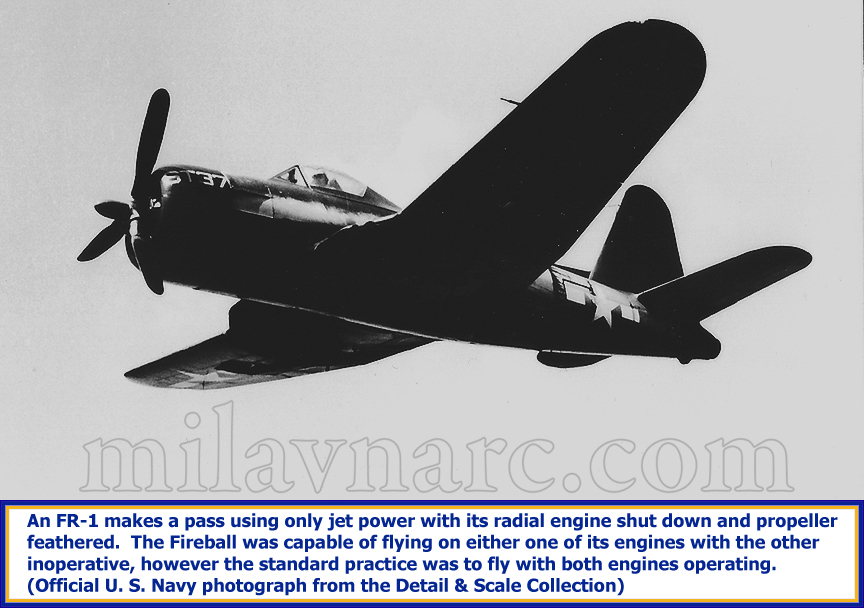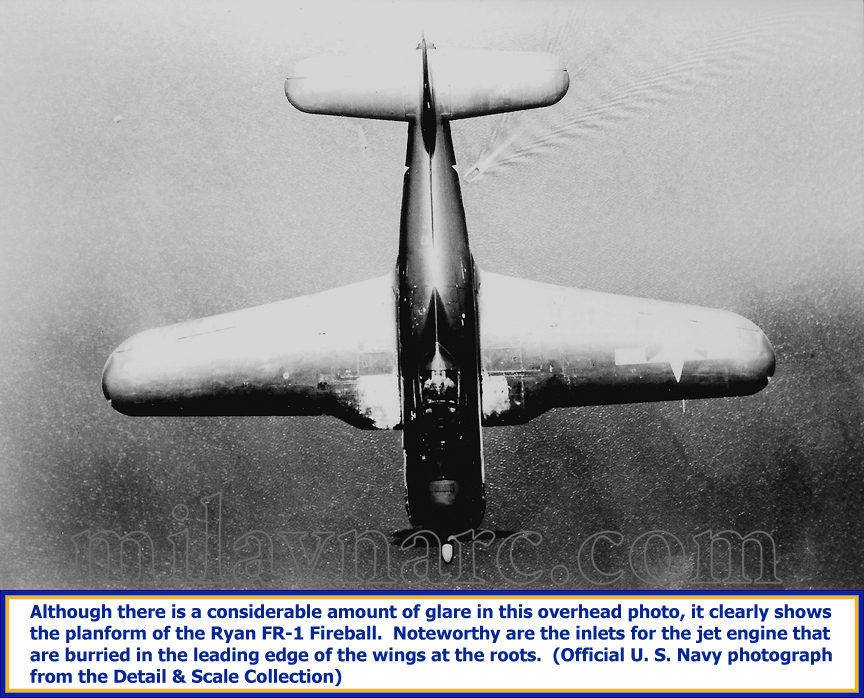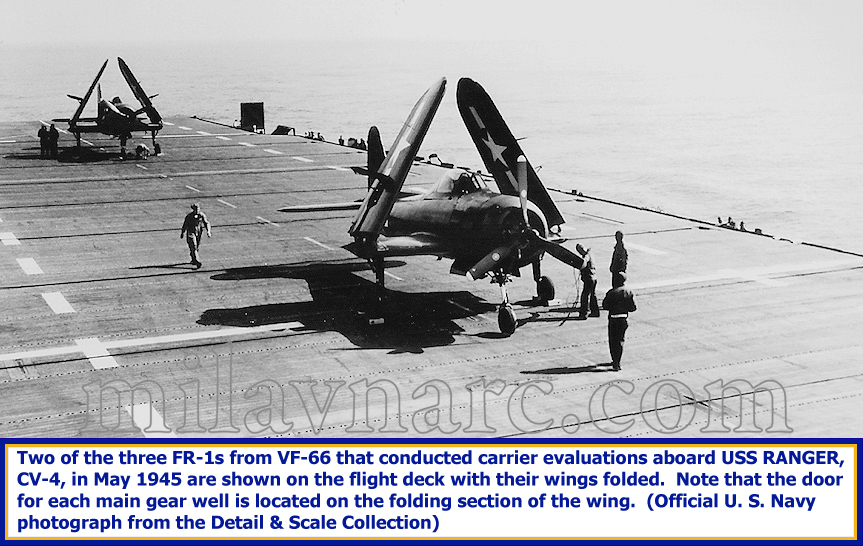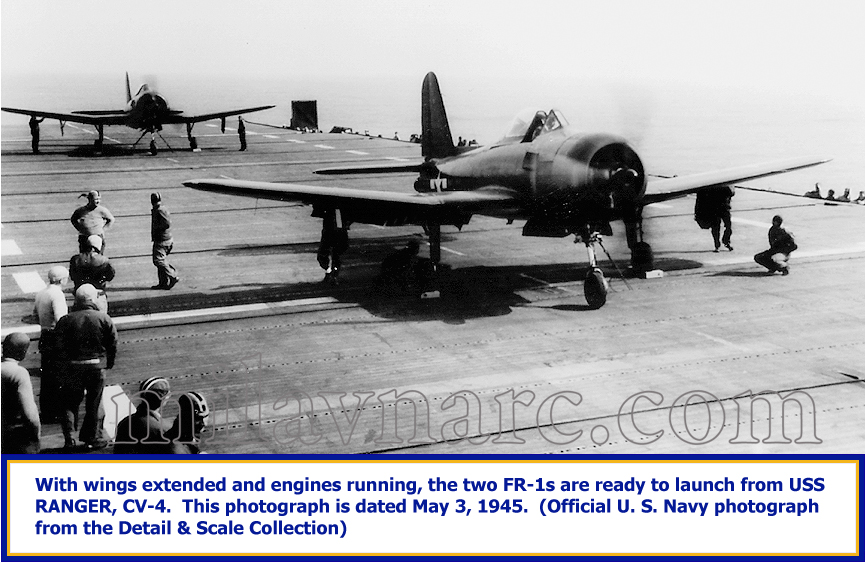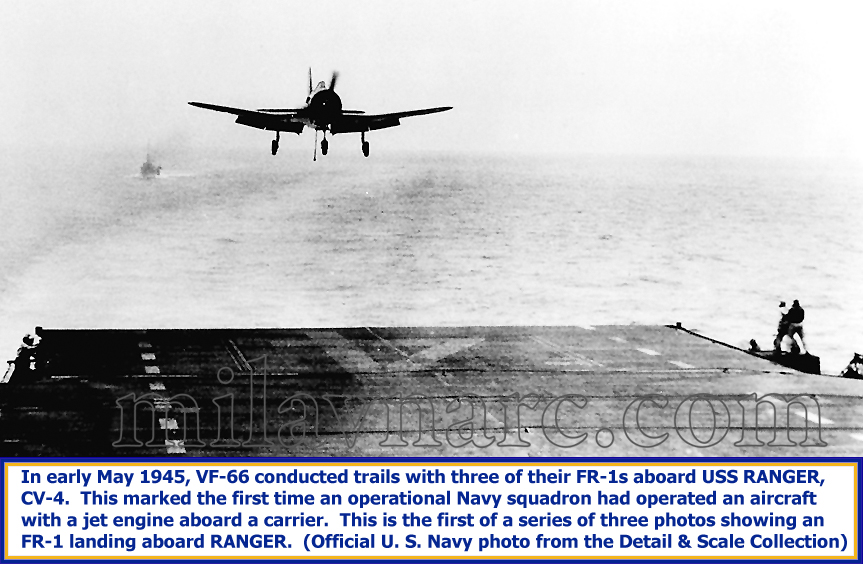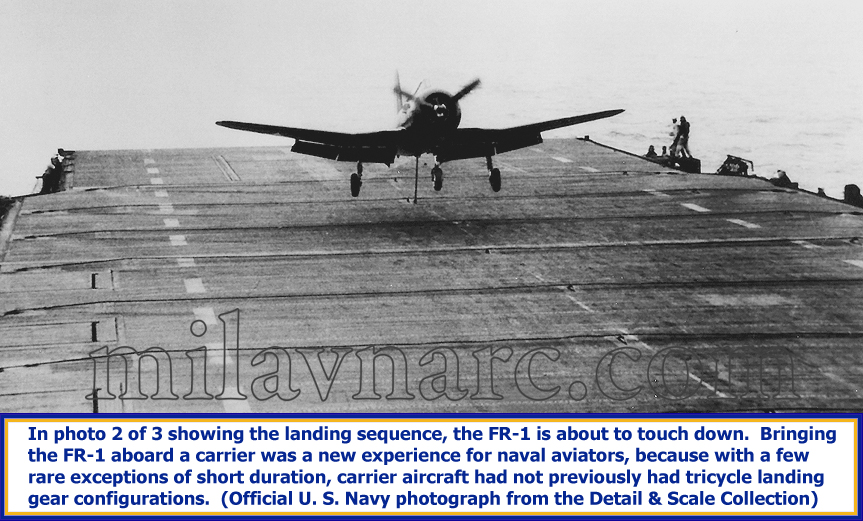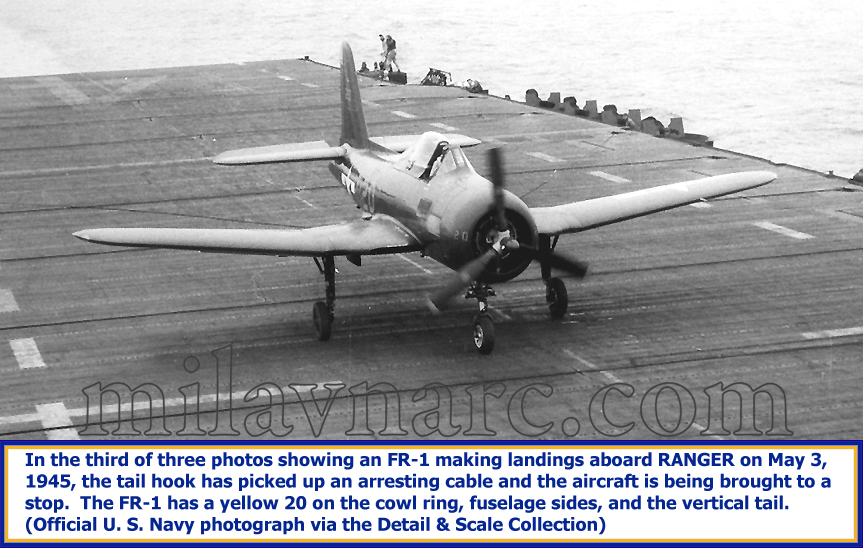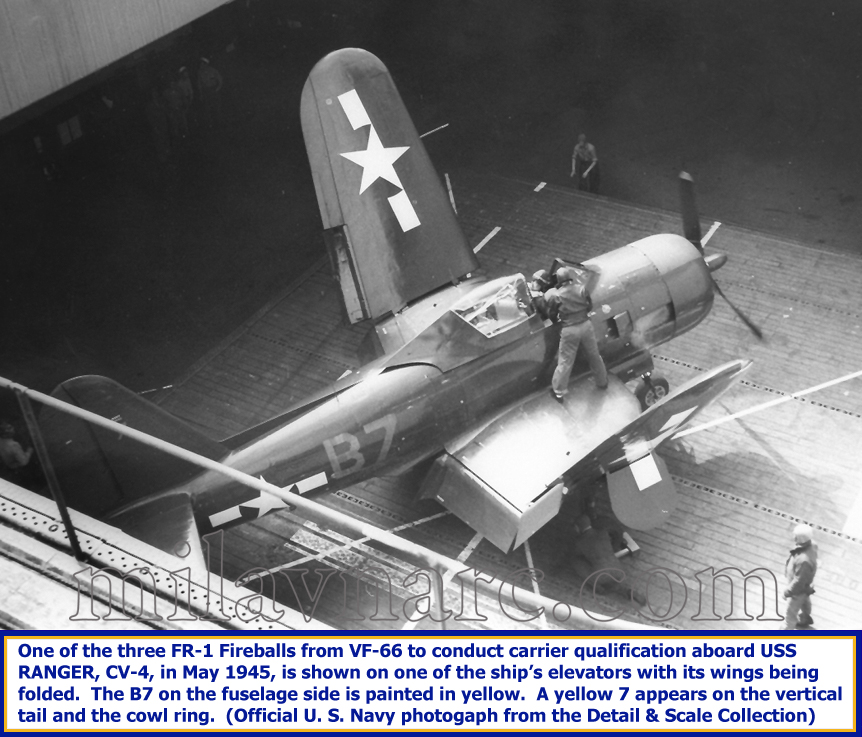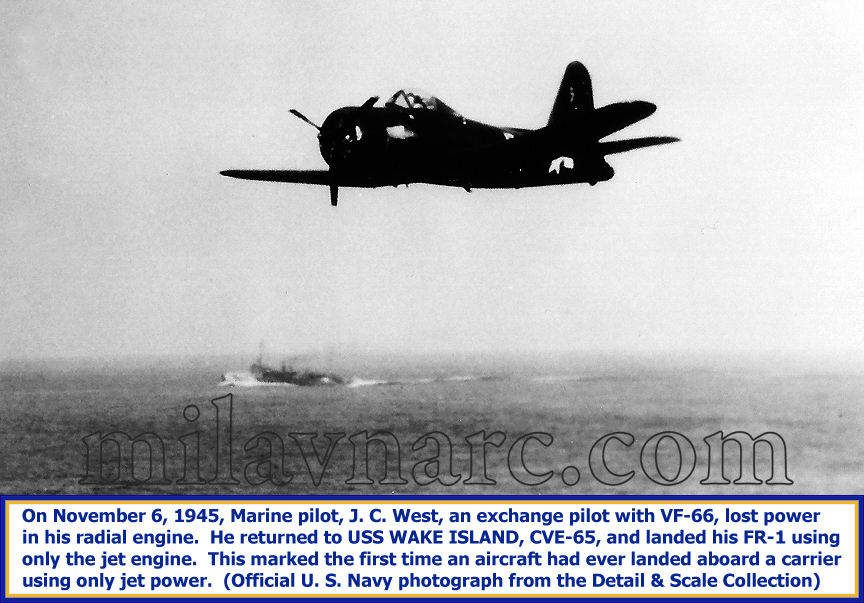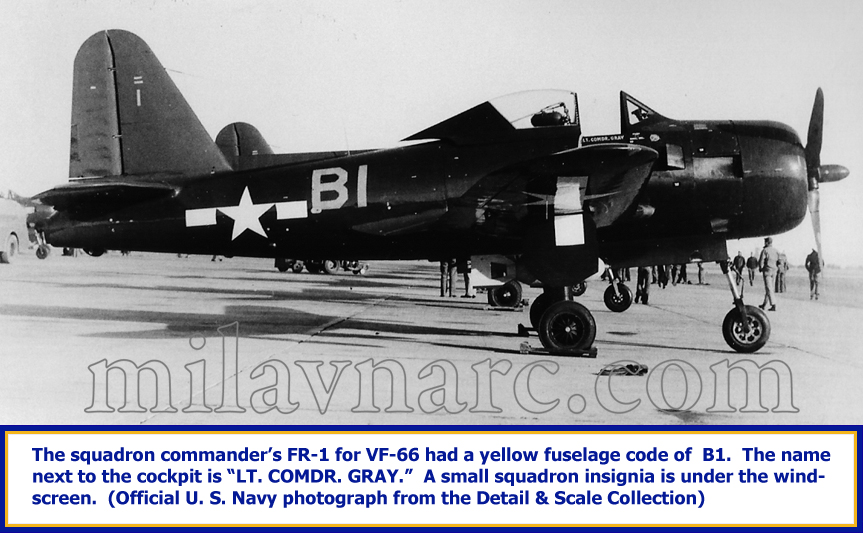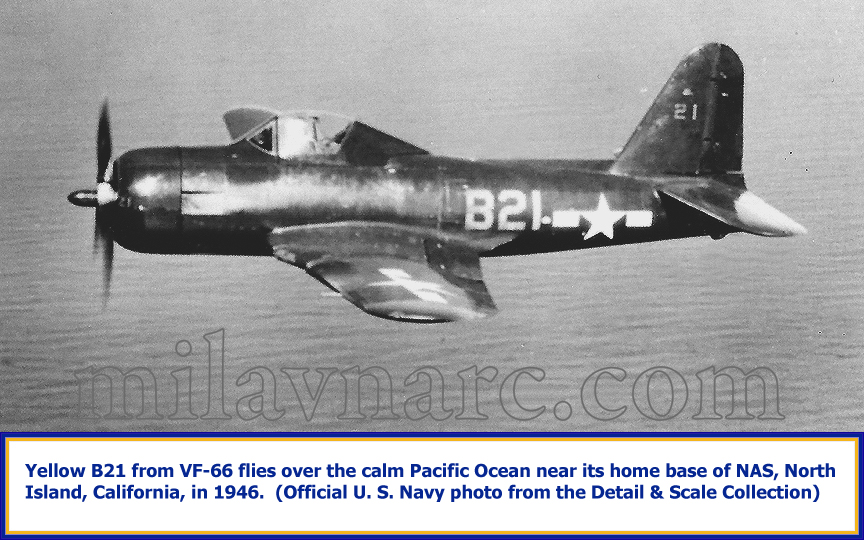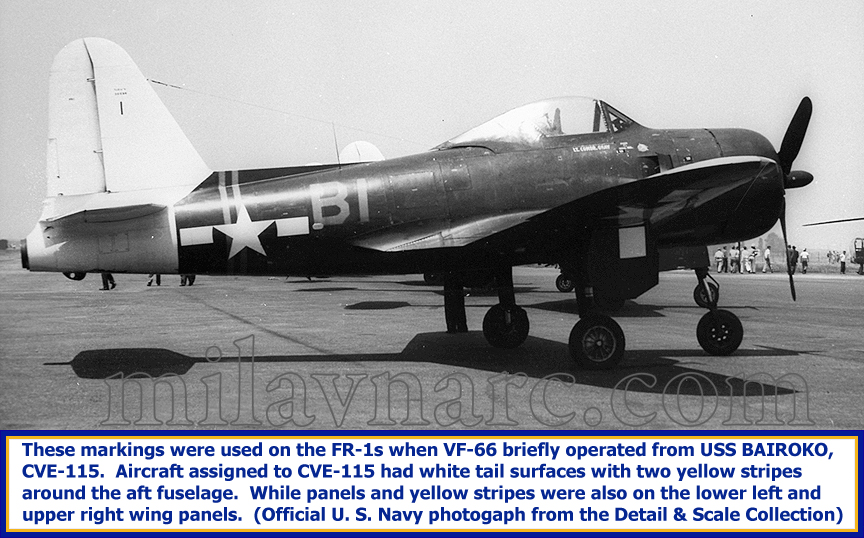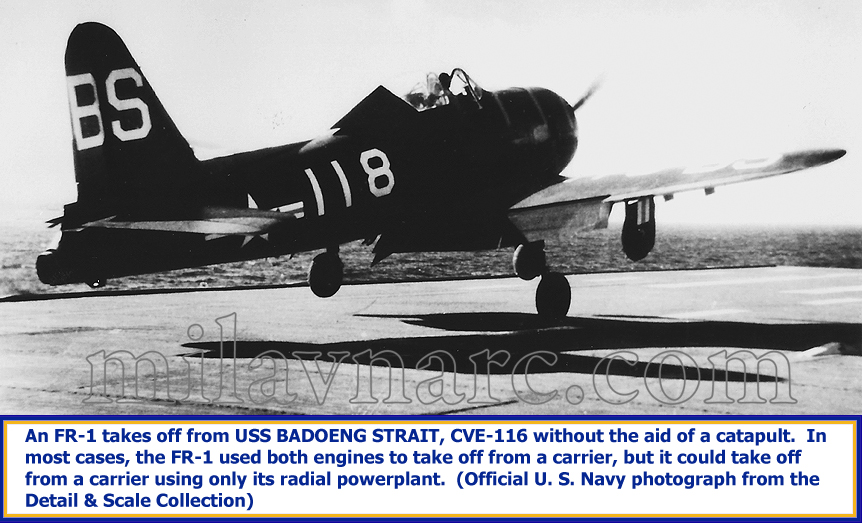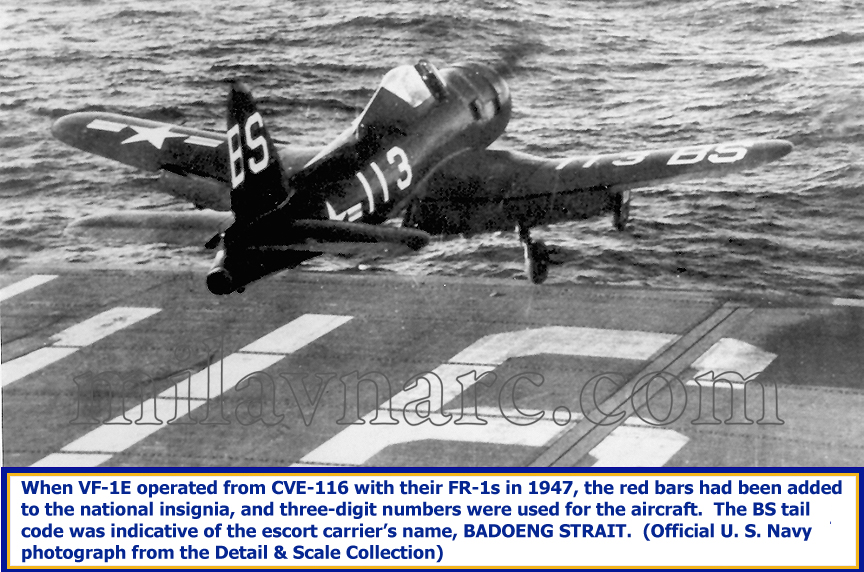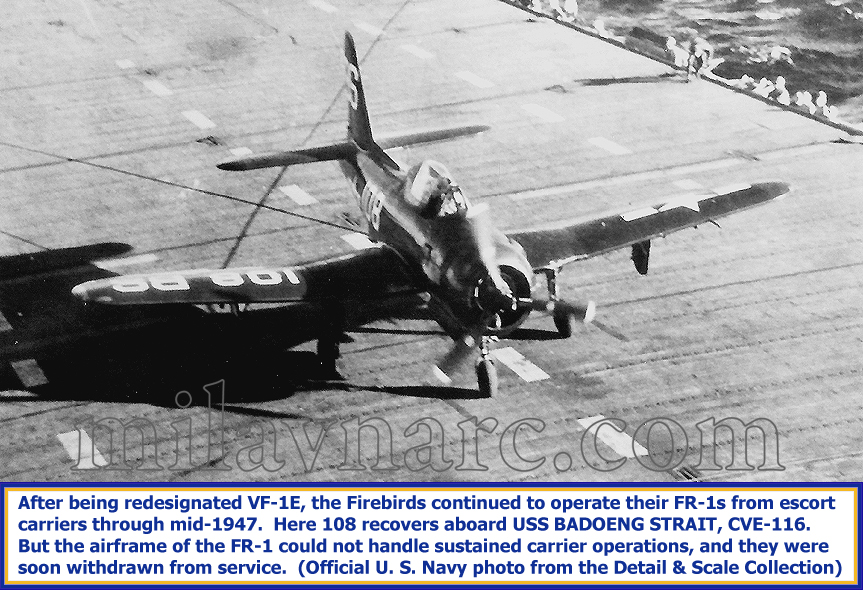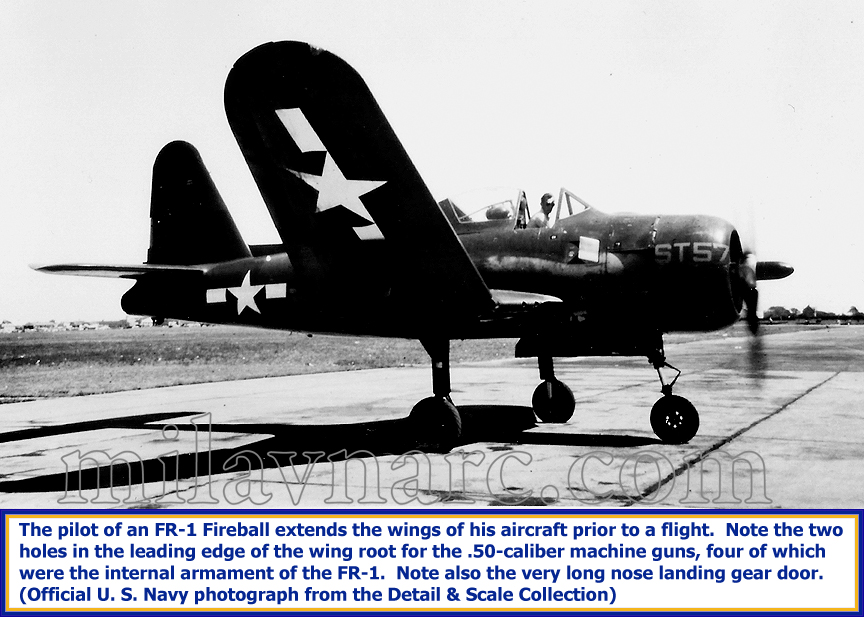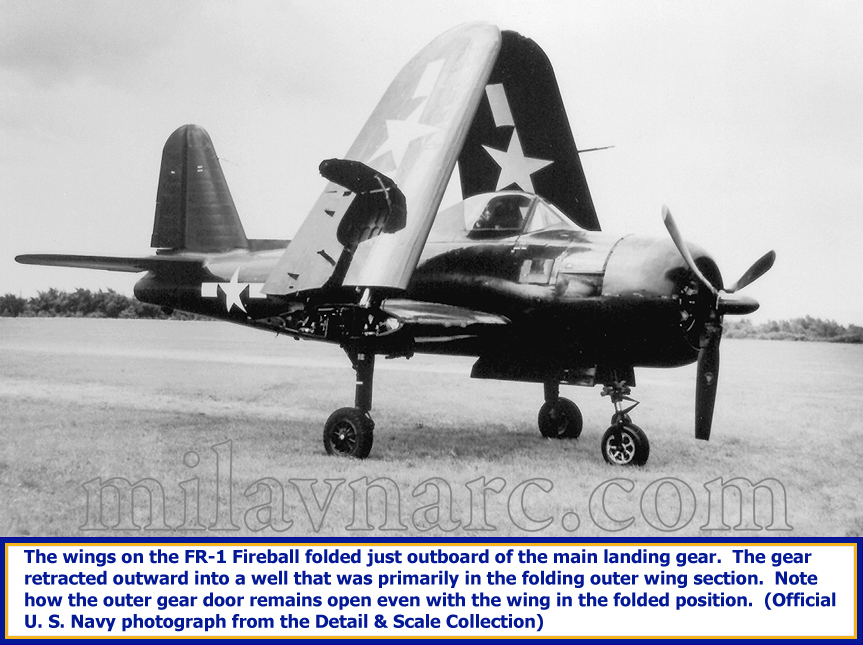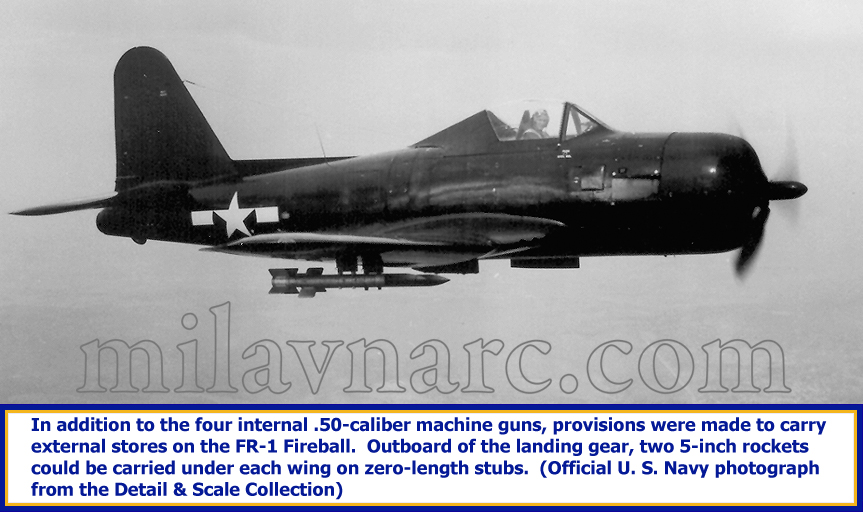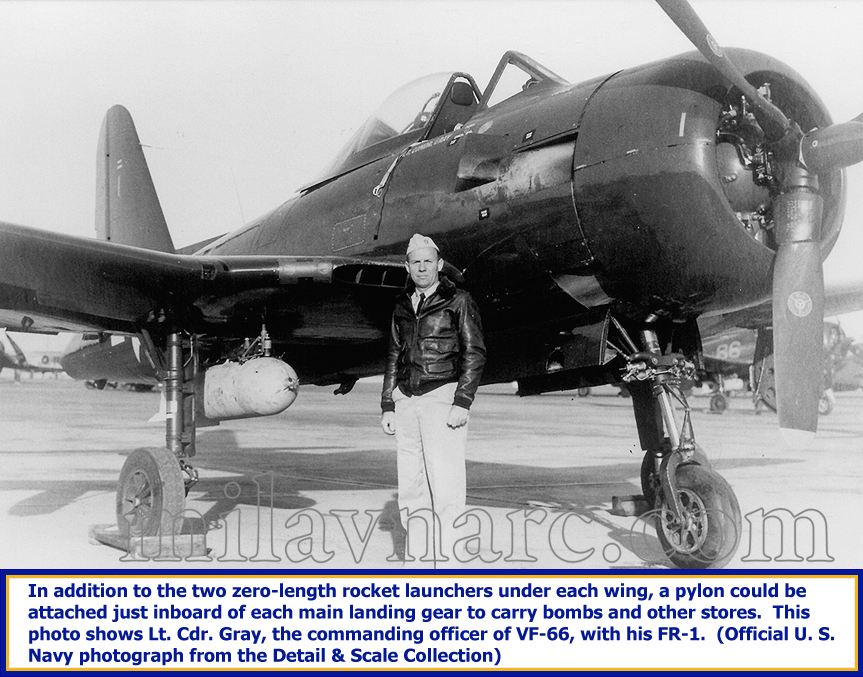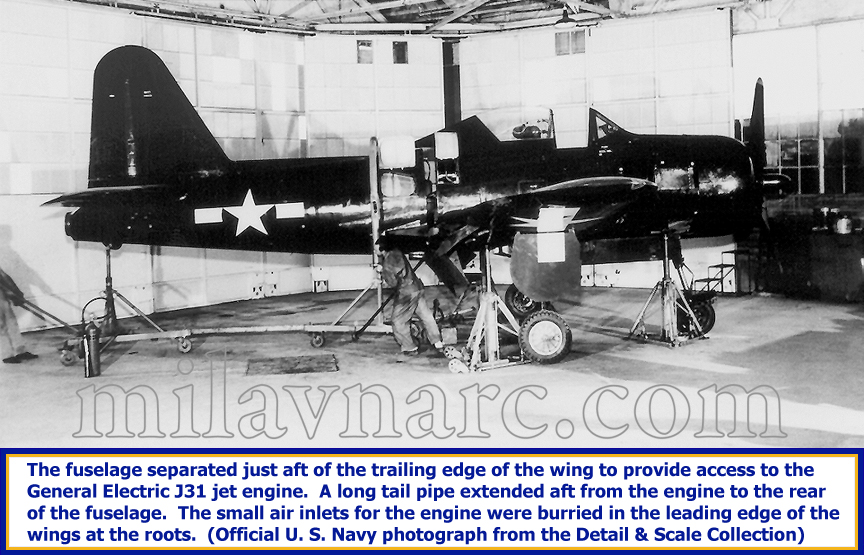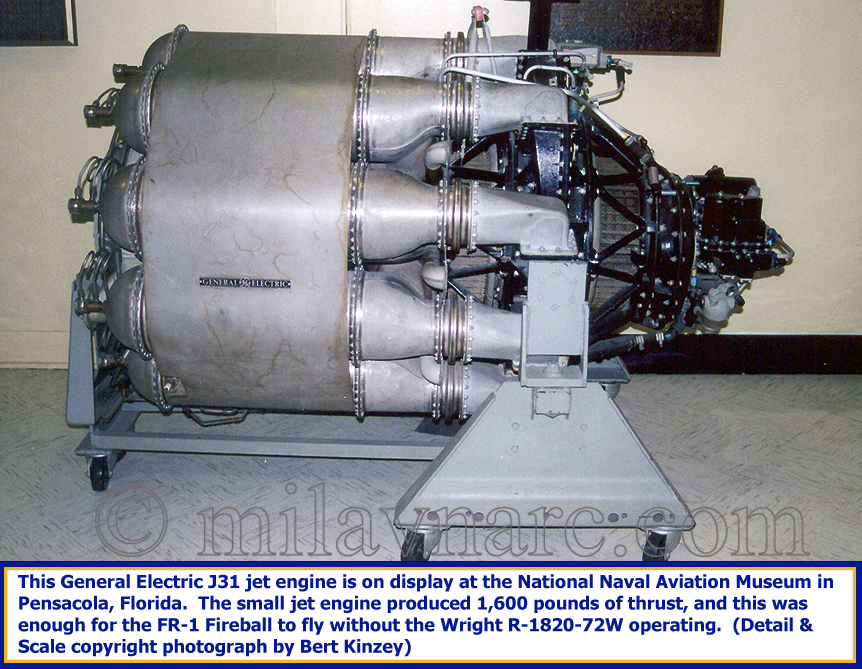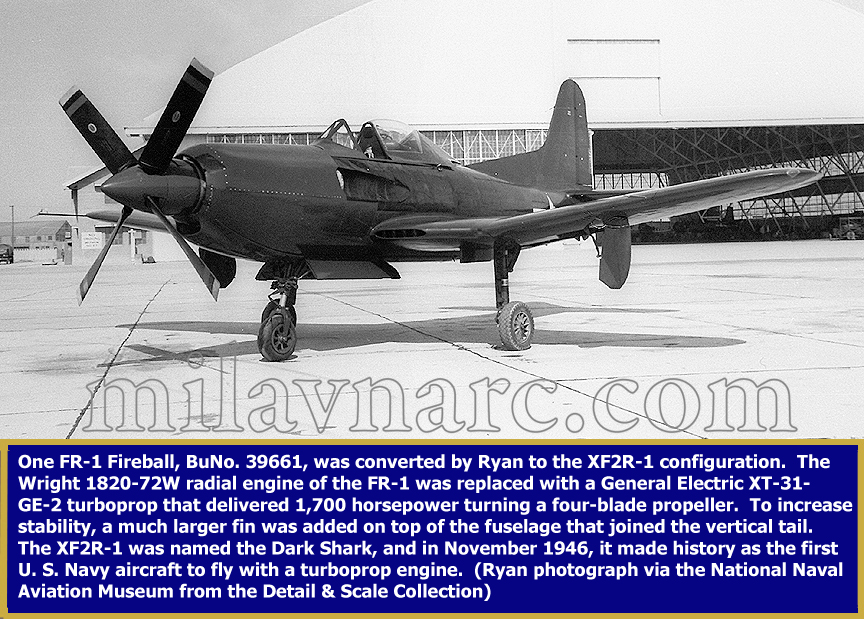During World War II, the development of gas turbine engines moved forward at a rapid pace. Germany led the way with the Me 262, which became the first operational jet fighter, and Great Britain followed closely behind with the Gloster Meteor. America lagged further back, but work was underway on several jet fighter designs as the war neared its conclusion. These included the Bell XP-59 and the Lockheed XP-80.
Although the turbojet engine offered the promise of higher speeds and overall greater performance, they also had severe limitations. Among these were slow acceleration, long take-off and landing rolls, high approach speeds, and very limited endurance. Carrier operations required takeoffs and landings in very short distances, and flights over great expanses of water necessitated good endurance, not only to meet combat requirements, but for safety considerations as well. While catapults and arresting gear would help solve the take-off and landing problems, the Navy believed that the early jet engines failed to provide the quick power responses needed for shipboard operations.
Because of this, the Navy wanted to take a very conservative approach as jet engines were introduced to shipboard aircraft. They opted for a composite fighter with both a standard radial engine and a small jet powerplant located inside the fuselage. They insisted that the basic design of the airframe and airfoil remain as close to existing and proven standards for carrier aircraft as possible. This was to insure that the aircraft handled well at the slow speeds necessary for carrier approaches and landings.
Nine aircraft manufacturers submitted proposals for a composite fighter in late 1942. Among these was a design submitted by the Ryan Company, best known for designing and building Charles Lindberg’s Spirit of St. Louis. In spite of the fact that Ryan had never built a combat aircraft, much less one intended to operate from aircraft carriers, they were selected to proceed with the development and production of three prototypes. A contract was issued on February 11, 1943, and work began immediately on the three XFR-1s.
In most respects, the design was much like that of other radial engine fighters then under development. An unusual feature was that the aircraft had a tricycle landing gear, so the exhaust of the jet engine would not scorch and burn the wooden flight decks on aircraft carriers. The main gear retracted outward into wells under the wing rather than in the more conventional inward direction. The wings were mounted low on the fuselage, and the horizontal tail was high mounted on the fuselage beneath the vertical tail. In flight, the XFR-1 could easily be mistaken for an F8F Bearcat.
A Wright R-1820-72W radial engine, which developed 1,350 horsepower, provided good low altitude and low speed performance. A small GE J31 jet engine was installed in the fuselage. Although it produced only 1,600 pounds of thrust, it was enough for the aircraft to fly on alone. The pilot could fully feather the propeller and cruise on jet power, or he could fly on just the radial engine. But in most cases, both engines were running when the Fireball was in the air.
A contract was issued for one hundred production FR-1s on December 2, 1943, even before the first prototype was ready to fly. That flight took place on June 25, 1944, and a second order for an additional 600 FR-1s was placed on January 31, 1945, the same month initial deliveries of the first production FR-1s began reaching the Navy. Also in January 1945, one of the XFR-1 prototypes was used for carrier suitability trials aboard the escort carrier, USS CHARGER, CVE-30. This marked the first time an aircraft with a jet engine ever operated aboard an aircraft carrier.
VF-66 was formed at NAS San Diego specifically to become operational with the new composite fighter. They began receiving their aircraft in March 1945, and in May they conducted carrier qualifications with three FR-1s aboard USS RANGER, CV-4. This was the first time an aircraft with a jet engine operated from an aircraft carrier while assigned to an operational Navy squadron. This squadron was later reformed as VF-41, and later this designation was changed to VF-1E.
The war ended before VF-66 could be deployed to the combat area, and with the end of the war, production of the FR-1 was terminated after only sixty-six aircraft had been completed. In the years following the war, the reformed VF-41 and VF-1E conducted carrier operations from several escort carriers including USS WAKE ISLAND, CVE-65, in November 1945, USS BAIROKO, CVE-115, in March 1946, and USS BADOENG STRAIT, CVE-116 in March and June 1947. The Fireball always operated with ease, even aboard the small escort carriers, however, the small airframe proved too fragile for sustained carrier operations, and they were withdrawn from service in late 1947. By that time, advancements with turbojet engines and aircraft design had solved many of the problems related to carrier operations, and the Navy was fully committed to developing jet fighters for its carrier air wings.
FR-1 FIREBALL DATA
Wingspan 40 feet
Length 32 feet, 4 inches
Height 13 feet, 11 inches
Wing Area 275 square feet
Weights
Empty 7,689 pounds
Gross 9,958 pounds
Max Take-off 11,652 pounds
Performance
Max Speed 426 mph at 18,100 feet
Cruising Speed 152 mpg
Landing Speed 91 mph
Rate of Climb 4,800 feet/1 minute
Service Ceiling 43,100 feet
Max Range 1,620 miles
Armament
Internal Four .50-caliber machine guns
External Provisions for up to four 5-inch rockets or two bombs
up to 1,000 pounds total
Historical Photos:
This photo set contains historical photographs of the Ryan FR-1 Fireball composite fighter used by the U. S. Navy from 1945 through 1948. Most of the photos are official U. S. Navy photographs obtained from the National Museum of Naval Aviation at Pensacola, Florida, which are now in the Detail & Scale Collection. The photos for this set were chosen to illustrate the history of this very unusual aircraft as well as its interesting features.

